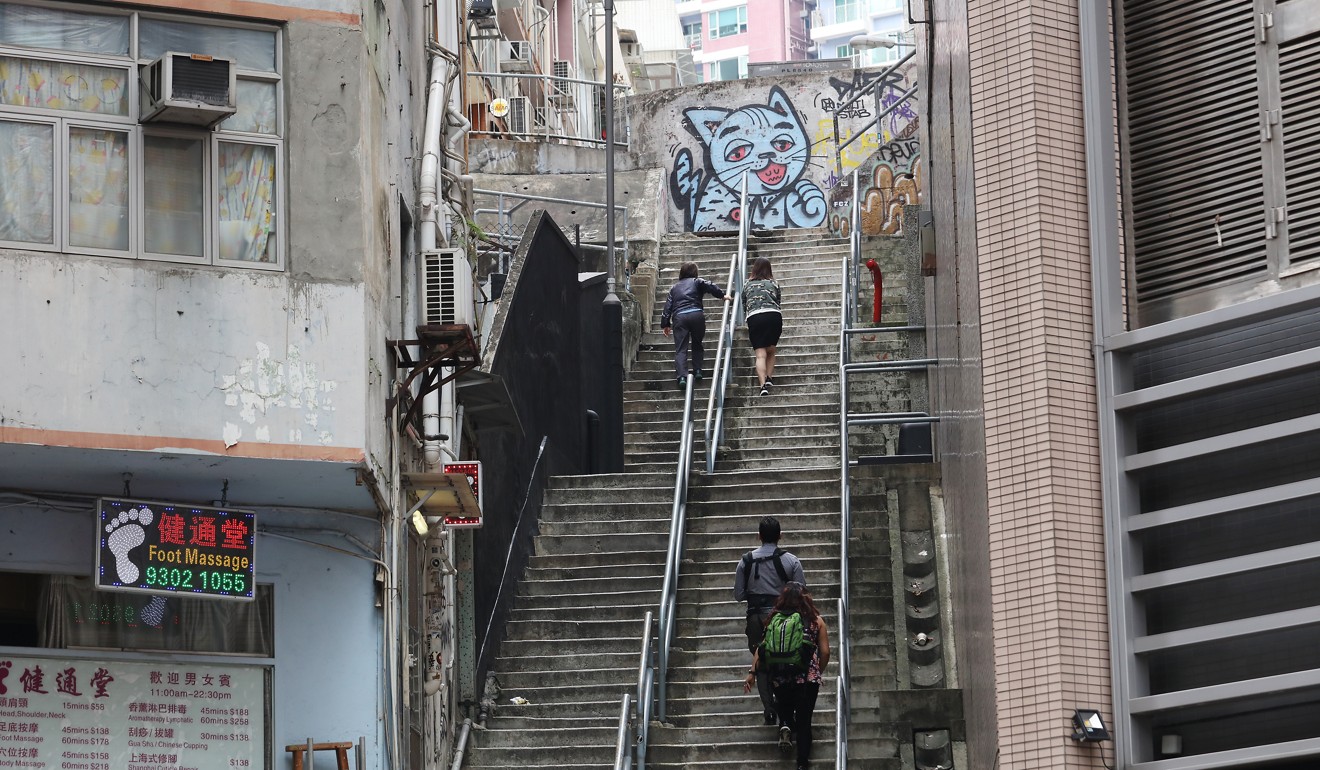
Shopping, dining, narrow streets and graffiti: Hong Kong lures Japanese tourists with Central focus
The number of visitors from the North Asian country increased 15 per cent this year
The Hong Kong Tourism Board is placing the more gritty delights of Central at the heart of its campaign at this year’s Tourism Expo Japan, which opened at the Big Sight exhibition centre in Tokyo on Friday.
The design of this year’s booth – one of the largest in the entire show – emphasised the dynamism of the city, with images of fireworks over the harbour, shopping and dining, the street art and narrow lanes of Central.
“Central is a completely unique area and it has a lot of tradition and history, as well as a lot of older buildings that are built in a more traditional style,” said Marii Hayashi, senior public relations executive for the tourism board’s Tokyo office. “But it also has a very contemporary feel, with lots of wall art that has become very popular with younger people who want to explore, take photos and then share them on social media sites.”

To tap into this new interest in the street art and Bohemian feel, the tourism board released a 50-page pamphlet in Japanese, Chinese and English to serve as a guide to some of the most interesting urban explorations and the art that visitors will discover.
The agency’s campaigns appear to be paying off, with the number of Japanese visiting Hong Kong this year up 15 per cent on the previous year.
“The increase is largely due to the rising flight capacity between Japan and Hong Kong, with new flights being added by both the legacy carriers and low-cost carriers, such as Hong Kong Express, Jet Star and Vanilla Air from Tokyo and Peach from Osaka,” Hayashi said.
Despite the effort to attract young people, the largest proportion of travellers from Japan are still 30- and 40-something women travelling in small groups or older couples.

The tourism board has prepared a new marketing campaign for late this year or possibly early next year that will select a different part of the city to highlight to Japanese visitors, although no firm decision has been made on what that might be. In the meantime, the agency is also promoting hiking and cycling excursions for Japanese visitors, most of whom only stay two or three nights.
A short distance away, business was also brisk at the Chinese travel pavilion – a sharp contrast to its popularity at the same event last year.
“Already it is clear that we are much busier than last year and I think that is in large part due to the better relationship between the two government and the two nations’ travel partners,” said Yang Yi Mu, of the Shanghai Municipal Tourism Administration.
“The Japanese government is encouraging Japanese people to go abroad, including to mainland China, while the Chinese side has also been promoting Japan as a destination.
“That means we can now put more effort into Japan to encourage more people from this market to visit China and I am sure we will see inbound numbers increase as we go forward.”

